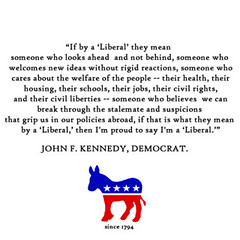Gas went from two-something a gallon to well over four dollars and approaching five, now it is back down under two dollars again. What a crazy roller-coaster ride it has been in the last couple of years for the cost of oil and its most beloved byproduct, gasoline. While I believe the recent decline in price has a lot to do with the falling demand of a sagging economy, it certainly does not tell the entire story. It wasn't so much that so much demand more than doubled the price at one time, but speculators looking to make a quick billion or two...all at the expense of the millions who fill up their cars.
From CBS:
To understand what happened to the price of oil, you first have to understand the way it's traded. For years it has been bought and sold on something called the commodities futures market. At the New York Mercantile Exchange, it's traded alongside cotton and coffee, copper and steel by brokers who buy and sell contracts to deliver those goods at a certain price at some date in the future.So we have a quick history about why Wall Street has futures trading, but no explanation to why it gets abused the way it does, yet. And Dan had already told 60 Minutes all about this speculative business back when oil was at its peak last summer. Then those in the market denied everything Dan said. Then this happened in September.
It was created so that farmers could gauge what their unharvested crops would be worth months in advance, so that factories could lock in the best price for raw materials, and airlines could manage their fuel costs. But more than a year ago those markets started to behave erratically. And when oil doubled to more than $147 a barrel, no one was more suspicious than Dan Gilligan.
If anyone had any doubts, they were dispelled a few days after that hearing when the price of oil jumped $25 in a single day. That day was Sept. 22.Of course there is nothing out there to do that, unless we went to war with Iran and they blocked the Straits of Hormuz. Anyways, here comes the big academia investigation:
Michael Greenberger, a former director of trading for the U.S. Commodity Futures Trading Commission, the federal agency that oversees oil futures, says there were no supply disruptions that could have justified such a big increase.
A recent report out of MIT, analyzing world oil production and consumption, also concluded that the basic fundamentals of supply and demand could not have been responsible for last year's run-up in oil prices. And Michael Masters says the U.S. Department of Energy's own statistics show that if the markets had been working properly, the price of oil should have been going down, not up.So, drumroll please, that means the increases were artificially created. So who is at fault? Well, that would include all sorts of financial entities, such as investment banks, hedge funds, commodities traders and the like. They were all looking for quick profits and found an avenue to do so in the oil futures market. So, I'll leave you with a sad joke from the interview, which pretty much sums things up.
"From quarter four of '07 until the second quarter of '08 the EIA, the Energy Information Administration, said that supply went up, worldwide supply went up. And worldwide demand went down. So you have supply going up and demand going down, which generally means the price is going down," Masters told Kroft.
"And this was the period of the spike," Kroft noted.
Sad but true.
Yes," Gilligan said. "I tease people sometimes that, you know, people say, 'Well, who's the largest oil company in America?' And they'll always say, 'Well, Exxon Mobil or Chevron, or BP.' But I'll say, 'No. Morgan Stanley.'"











|